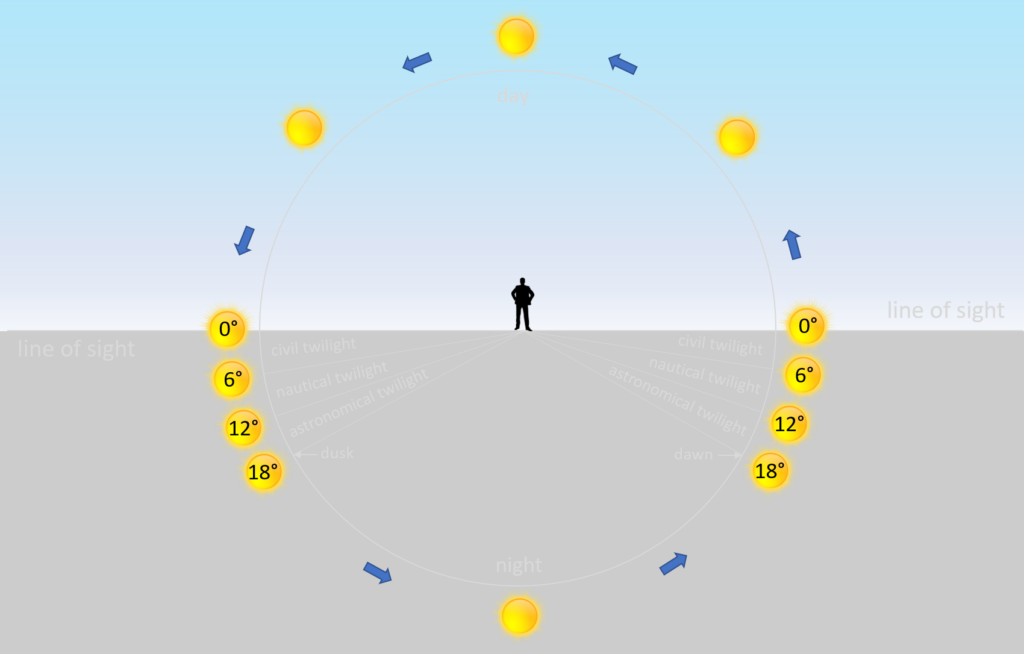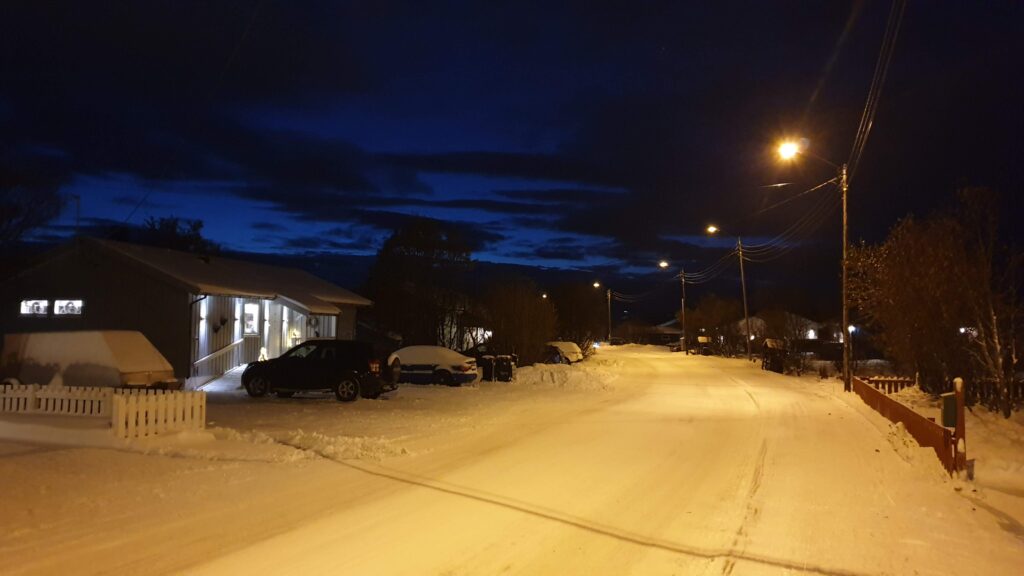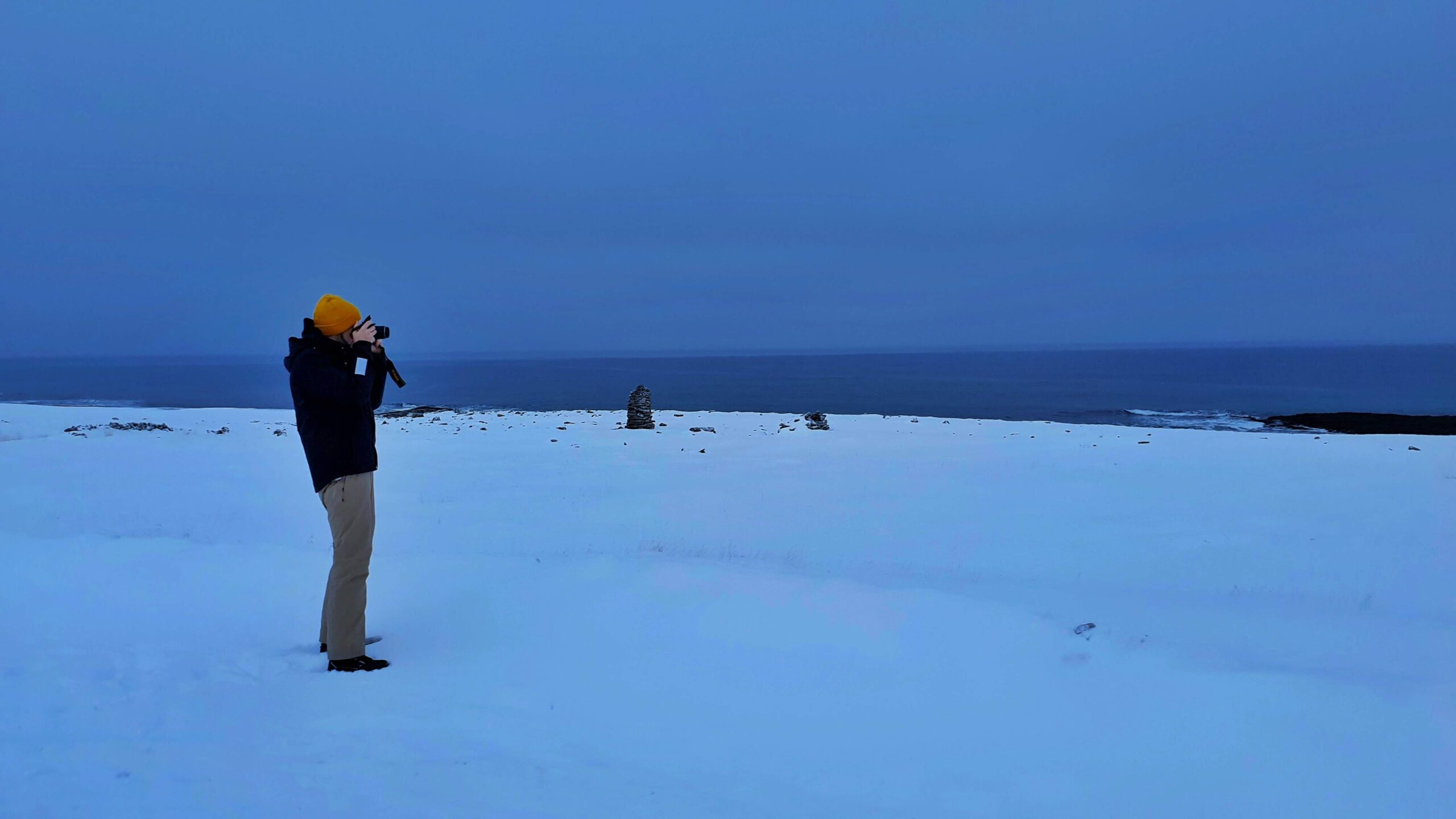This is not an article about the famous TV show with vampires! In the next few minutes we’ll talk about what the actual twilight period of the day is, when and how it occurs, and what each type of twilight looks like.
What exactly is twilight?
Twilight is the period of the day when a certain point on Earth is illuminated indirectly, by sunlight scattering, when the Sun is below the horizon, but not more than 18°, thus its rays are still visible, indirectly, for an observer located at that certain point. The lower the Sun is below the horizon, the dimmer the twilight. When the Sun reaches 18° below the horizon, the sunrays’ brightness is gone completely and the “real” pitch-black nighttime starts. (Of course, when talking about the Sun being “18° under the horizon”, we mean its “geometrical centre!”)
The image below presents schematically an observer, his line of sight and the position of the (geometrical centre of the) Sun, at various times of the day:

During the course of a day, at sunrise, the Sun appears in the sky from the right (East) and, during the whole daytime, it shines its light directly onto the place on Earth where the observer is located. In the evening, at sunset, the Sun will again reach 0° on the left side (West) and it will slowly disappear under the horizon. This moment the evening twilight starts. Due to earth’s rotation, the Sun will continue to descend more and more under the horizon. But before our star reaches 18° under the horizon, there will still be distinguishable light from the Sun for the observer. When the Sun reaches 18°, dusk occurs, and the observer will not distinguish any indirect sunlight anymore and the astronomical night starts.
Because of Earth’s rotation, the Sun continues its trip and, very early in the morning, before it rises, it will reach again 18° under the horizon. At this moment, dawn occurs, and twilight starts again – this time we’re talking about the morning twilight. As time passes more, the Sun will ascend more, until it reaches again 0° and it rises the next day.
Twilight occurs thus during both periods of the day when the Sun is between 0° and 18° under the horizon.
In function of the position of the Sun below the horizon during twilight, due to the difference of indirect illumination, we distinguish three types of twilight:
● civil twilight – when the Sun is between 0° and 6° under the horizon,
● nautical twilight – when the Sun is between 6° and 12° under the horizon,
● astronomical twilight – when the sun is between 12° and 18° under the horizon.
Civil twilight

Evening civil twilight occurs right after sunset and it lasts until the Sun reaches 6° under the horizon. Morning civil twilight occurs before sunrise, when the Sun is 6° and less under the horizon.
During civil twilight, there’s enough indirect light from the Sun so that artificial illumination is not needed. Objects and landscapes are still visible to the unaided eye. This period is especially sought for by photographers, as the lighting creates an amazing effect in pictures. In polar regions, this is when you can experience the beautiful polar blue.
The first bright stars and planets appear in the sky during civil twilight. Venus is usually seen at this time, hence its name “evening star” or “morning star”.
Nautical twilight

Evening nautical twilight occurs when the evening civil twilight ends, thus when the Sun is lower than 6° below the horizon, and it lasts till our star reaches 12° under the horizon. In the morning, nautical twilight occurs when the Sun is 12° below the horizon and until morning civil twilight starts.
The name “nautical twilight” comes from the fact that sailors could still distinguish a visible horizon at sea, and they were still able to navigate thanks to the brightest stars that are perfectly visible in the sky during the nautical dusk. When not at sea, in places where light pollution is absent and when certain atmospheric conditions are met, the unaided human eye may still distinguish shapes or silhouettes of objects.

Astronomical twilight
Evening astronomical twilight occurs when the Sun is below 12° relative to the horizon and just before the astronomical night starts – thus when the Sun reaches the 18° point under the horizon. In the morning, astronomical dawn marks the time when the first indirect sunrays appear and until the morning nautical twilight starts.
The end of the evening astronomical twilight marks the moment when the faintest stars and other faint astronomical objects become visible. And, of course, they will stay visible until astronomical dawn. The unaided human eye will generally not be able to detect any light however, and it will consider the sky entirely dark.
***
In the next part, we will look at how twilight occurs in different locations on Earth. Did you know that, here in Vadsø, when the Polar Night starts (around 25 November each year), we experience a continuous civil twilight from around 8 o’clock in the morning and till around 14h? Find out other cool twilight facts here!


3 replies on “Twilight”
Read more about how twilight occurs in different places on Earth.
Did you know that the Belt of Venus can be seen at the opposite side of a beautiful sunset or sunrise?
Read more about the Polar Night